How Do Boat Trim Tabs Work?
Trim tabs work exactly the same way as the control surfaces on an airplane. They help stabilize the boat and keep it running on an “even keel” as some might say. Once you understand how they work, it’s easy to see why they’re so helpful and how you can male the most of using them.
There are three axes affecting the motion of your boat as you travel through the water: Yaw, Pitch and Roll.
Yaw: If there was an invisible pole straight up and down through the center of your ship that you could move back and forth to make the vessel roll side to side, that would be the yaw control. But you do have something similar to that, don’t you? The rudder controls the side to side movement of the outdrive. For that reason, trim tabs don’t have much effect over the yaw control of your boat.
Pitch: This is the up and down motion of your boat. That’s why the pitch axis is responsible for raising and lowering your bow. As a result, you obviously want trim tabs to help with this. The movement of your bow is something you need some control over.
Roll: Tilting left or right is done along the roll axis of the boat. When the boat rocks back and forth thanks to high winds or rough seas, that’s the roll you’re experiencing. Trim tabs are very effective in working with the roll axis. If you have a deep V hull, the trim tabs can really help control that movement.
What Are Trim Tabs?

As you move, the actuators push against the plates. The plates then push down on the water. essentially the trim tabs deflect water. That basically means you’re pushing the boat back up. So if the boat is listing to the side along the roll axis, the trim tab pushes back to level it out again. Because the tabs are placed on opposing sides, the other tab can compensate if the boat leans back too far in that direction.
How Do Trim Tabs Work?
The port and starboard trim tabs act independently. It is a simple thing to adjust them to lift the down side of the boat and compensate for the three or four hundred kilos of weight caused by your passengers all wanting to be on the same side. To do this, lower the down side tab. The water pressing against the tab as you move will lift that side of the boat (around the roll axis ) and eliminate your list.
As your passengers move about, you can continue to adjust the tabs to compensate for the redistribution of weight. You must understand though, the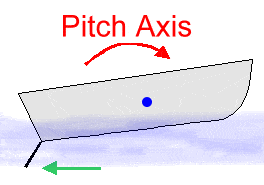
Where most operators initially use trim is in the pitch axis , getting their boats to the plane mode as quickly as possible. It is then easy to maintain the boat’s most economical cruising speed by tab adjustment. This is accomplished using the ” Bow Down ” control. This lowers both tabs and the force of the water against them will push the stern up consequently lowering the bow (around the pitch axis ). Again, smooth rather than aggressive application is recommended to prevent pitch down of the bow. Trim may also be used in the pitch axis to keep the bow up to avoid taking seas over the bow if the water is rough. Naturally you would use the “Bow Up” control to do this.
I mentioned that trim tabs have little effect in the yaw axis , but they do have some. I’m sure you can readily understand that if you have only one of the tabs hanging out, besides lifting that side of the boat it will also cause a certain amount of drag . This will have the effect of slowing that side of the boat causing the bow to rotate about the yaw axis and turning the boat to that side. The rudder or out-drive are usually adjusted slightly to compensate.
Using trim tabs is much like riding a bicycle. You learn to do it by feel. Your knot meter will tell you when you have trimmed for best speed at any throttle setting and your common sense will help you adjust trim to sea conditions and weight distribution. I am positive that in gaining experience you will soon amaze your friends with your skills in boat handling and trim.
Getting the Most From Trim Tabs
Like many parts of boating, learning to use trim tabs takes practice. No one just hops in a boat and understands all the ins and outs the first time. You need to develop a feel for how they work. And they can be very different from one boat to the next, so an adjustment period and learning curve is expected.
Your best bet is to try them out slowly. Make simple adjustments that don’t take a long time. Try to operate them about a half second at a time. This will allow you to get a feeling for just how much or how little they change the trim of your boat. Then you can fine tune their use from there.
If you’re not sure how much trim to use, keep your eyes on what your boat is doing. Look for stern wake and bow spray. Also that big rooster tail indicative of speed boats. It looks cool and all, but do you want that? If that’s not the look you’re going for, then you need to adjust the trim. A boat that isn’t trimmed properly will always produce more spray. Once you have it trimmed right, you’ll be a lot more smooth and even with far less spray overall.
Benefits of Using Trim Tabs Properly
Cost: A properly trimmed boat performs better, which can save you time and money in the long run. You’ll notice improved RPMs on a properly trimmed boat. When your engine performs better, you’re saving money by not going through as much fuel. It’s also going to be a lot less stress on your engine.
Comfort: When a boat is well trimmed you’ll also have a far more comfortable and safer ride. Consider what happens if you have an issue with uneven weight distribution or prop torque. Your vessel may end up listing to one side or the other. A little bit of listing is easy enough to ignore, but if it gets bad enough it can be a real danger. Obviously you want even weight distribution to prevent this, but trim tabs can help make adjustments as well.
Performance: Sometimes when you get up to speed you have issues with the bow raising and the stern getting too low. This can mean it takes a while to actually get up to speed. You want to get on plane quickly and efficiently. It saves time, saves fuel and reduces stress on the engine. Adjusting the tabs to raise the stern and lower the bow can greatly help with this.
Porpoising: Trim tabs are able to reduce issues that some speed boats have with porpoising. If you’ve never experienced this, you’ve probably seen it. Boats at high speed sometimes will suffer an issue with the bow continually rising up and out of the water, essentially bouncing on the surface of the water like a porpoise in motion. Trim tab adjustments can either stabilize this or reduce it to an acceptable level, depending on what you’re going for.
How Do You Choose the Right Trim Tabs?
Trim tabs are designed for nearly every size and shape of boat out there. So how do you choose which is right? There is a standard rule of thumb for the properly sized trim tabs that will work best for any given boat. The general rule is that an inch of trim tab span or width for every foot of boat length for optimum performance. The depth or chord is recommended at 9 inches if you have a fast boat. If you have a slower, heavier boat then go for 12 inches.
Keep in mind, this doesn’t always work. On many 25 foot boats, for instance, you just don’t have room for 24 inches of trim tab on the transom. Especially if you have twin outboards, for instance. In these cases, you can go for narrower tabs that just have a deeper chord. The problem here is that these trim tabs produce drag if they’re too deep which can hinder performance overall. So sometimes you need to do some calculations about what works best. You may want to talk it out with some experts first to see what they think works best for your boat if this is new territory for you and you aren’t sure what to do.
What Does Tilt and Trim Mean?
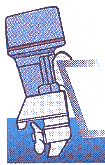
Since boating terms can sometimes be confusing, the notion of tilt and trim obviously comes into play when dealing with trim tabs. Tilt and trim deals with engine movement. You control the tilt and trim by moving the engine up or down as you move through the water.
If the boat is not moving and your propeller shaft is perfectly parallel to the water’s surface, that’s neutral trim. As you start moving, you can trim the engine up or down. Trim the engine up and the propeller shaft moves down. The stern goes down and the bow comes up.
If you want to trim down, the shaft will point upwards. The stern will lift and the bow will go down. The effect is related to what trim tabs do, but obviously there’s a difference here. Most people refer to the ability to change the trim of your boat by adjusting the engines tilt and trim as power trim.
What is a Power Trim Tab?
Power trim is the ability to quickly and easily adjust your trim with an outboard or sterndrive engine. Sterndrives typically have less range of motion here than an outboard. Not every outboard or sterndrive has power trim however, so don’t take it for granted. Some motors, especially in various older boats or cheaper boats, do not tilt up and down. That said, they can still be adjusted but it takes more effort. A pin in the motor bracket would need to be manually adjusted to accomplish this.
You should check your owner’s manual for accurate details on adjusting the angle here. In general, however, any bracket should have four or more holes that determine the angle of operation for the motor. The pin needs to be removed when the engine is off and the boat is stationary. It can be adjusted to the desired angle and the pin can be replaced.
The process of this manual adjustment is, of course, not nearly as efficient as power trim since you need to stop the boat and turn off the engine to make any adjustments. However, if you’re finding the trim on your boat is giving you a lot of trouble and that you need to make adjustments, this could help even things out.
What Are Automatic Trim Tabs?
Sometimes called smart trim tabs, automatic trim tabs do what they claim to do and trim the tabs automatically. Bennett trim tabs are some of the most popular auto tabs out there. You don’t need to worry about controlling anything. A good auto trim tab system will have a manual mode to allow you to take control whenever you like, however.
Automatic trim tabs can make adjustments to pitch and roll as you travel. They take into account things like speed as well as the conditions of the water and even weight on your boat.
The Bottom Line
Trim tabs are an effective and helpful way to make your boat run more smoothly. They improve the ride and let you get the most out of your vessel. Take the time to learn how they work and you’ll be enjoying the benefits in no time.
Categories: nauticalknowhow
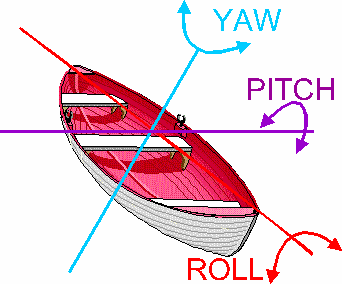
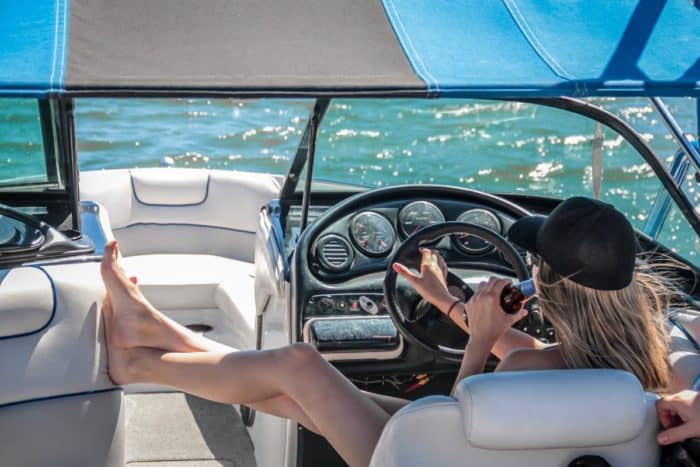

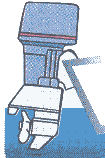













2 Comments
Kane Holland on May 18, 2022
Trimming the tabs causes a bit of drag when they’re deployed. However, they are only really necessary if the waves and winds are strong. Most of this happens in the ocean, not in rivers and lakes, so if you don’t want to deal with a drop in speed, it’s best to keep an eye on it.
Jim Tabscott on July 12, 2022
Trim tabs actually lift the stern of the boat up and out of the water. Less boat in the water means less drag which means an increase in engine RPM which translates into a faster more economical run. Interceptors and Humphreys do creat drag. I’ve found Lencos to be superior to just about every tab out there. Also your sizing is very generic and miss leading. 29ft boat doesn’t need 29 inch wide blades.